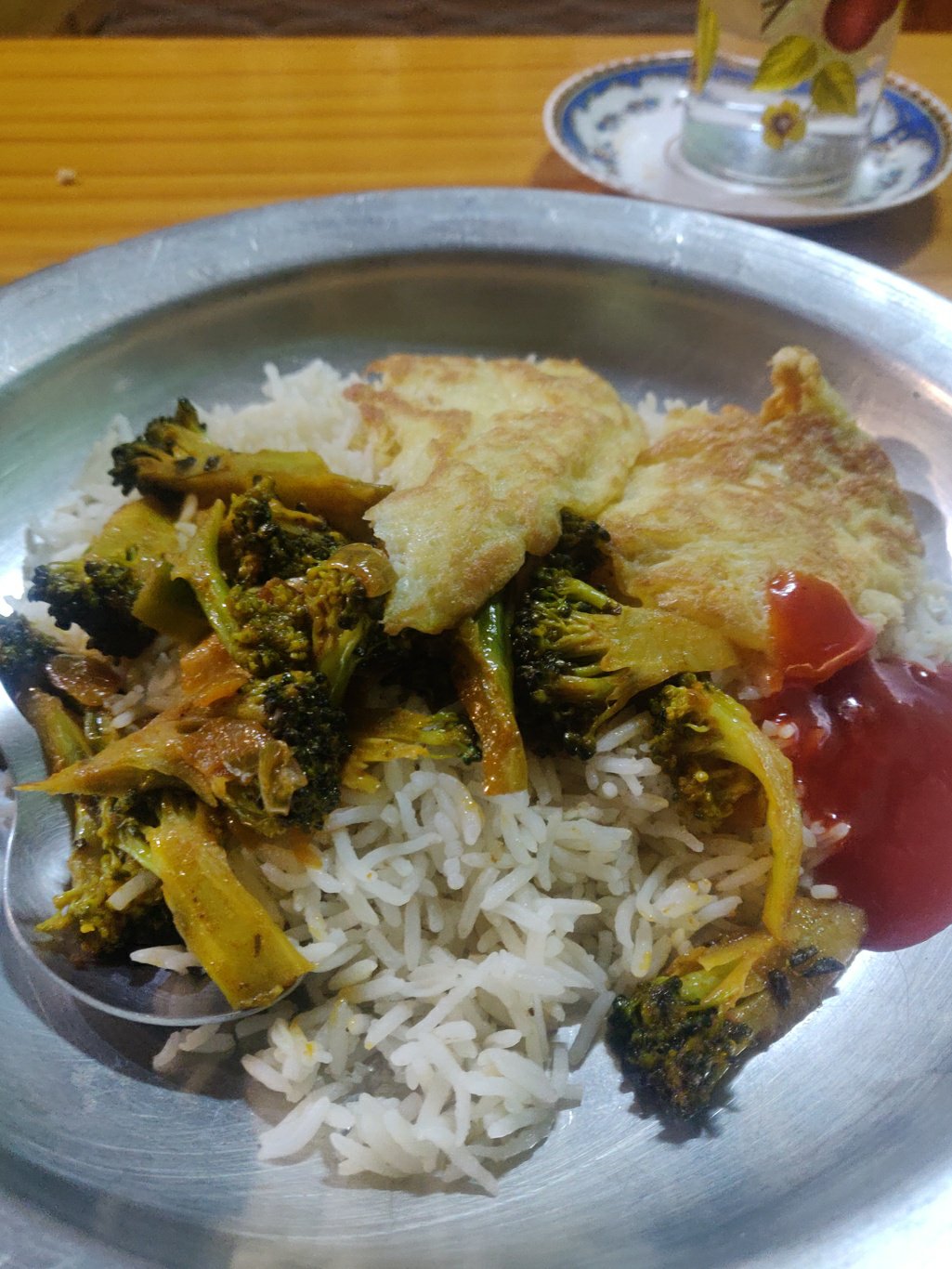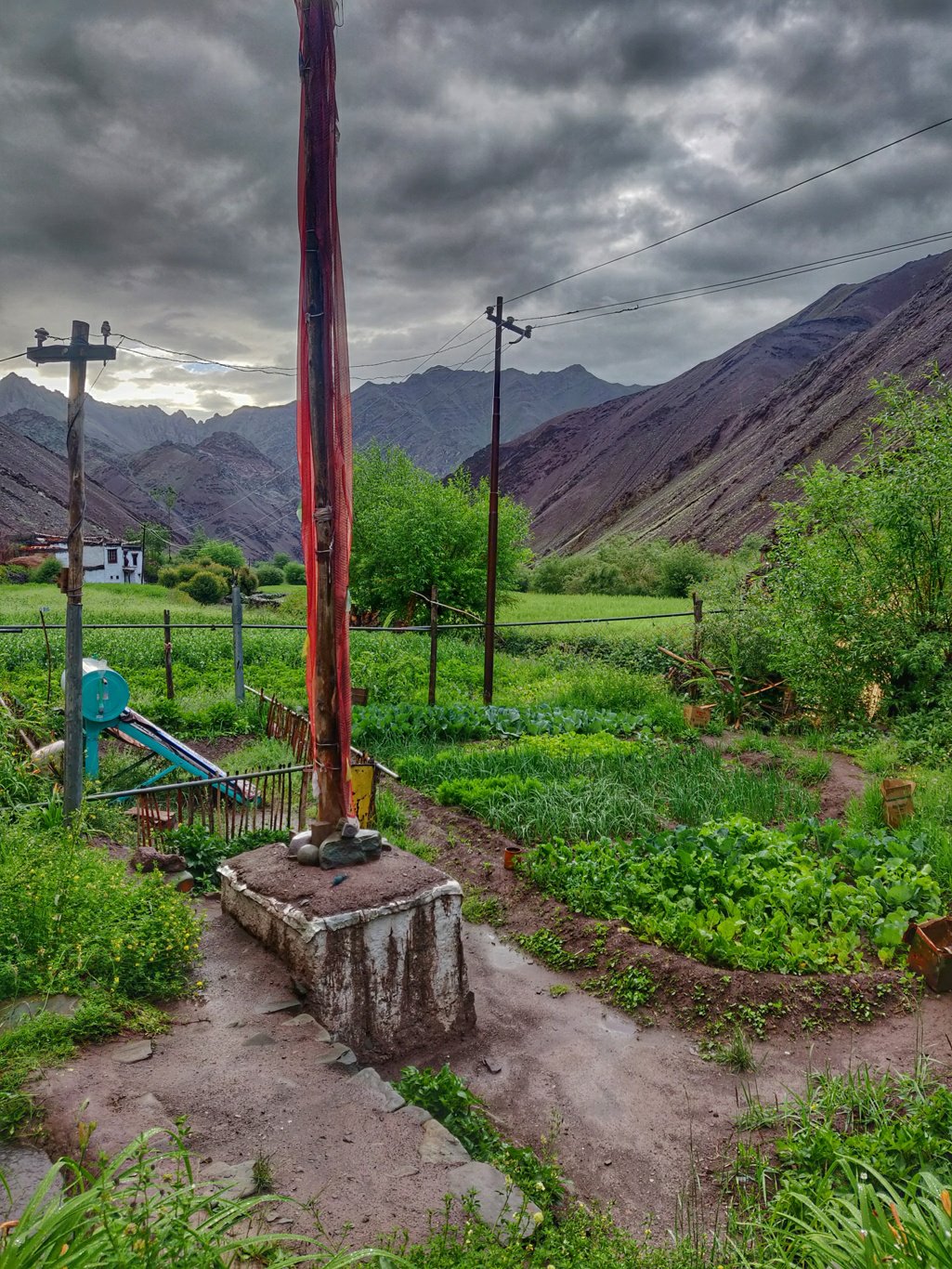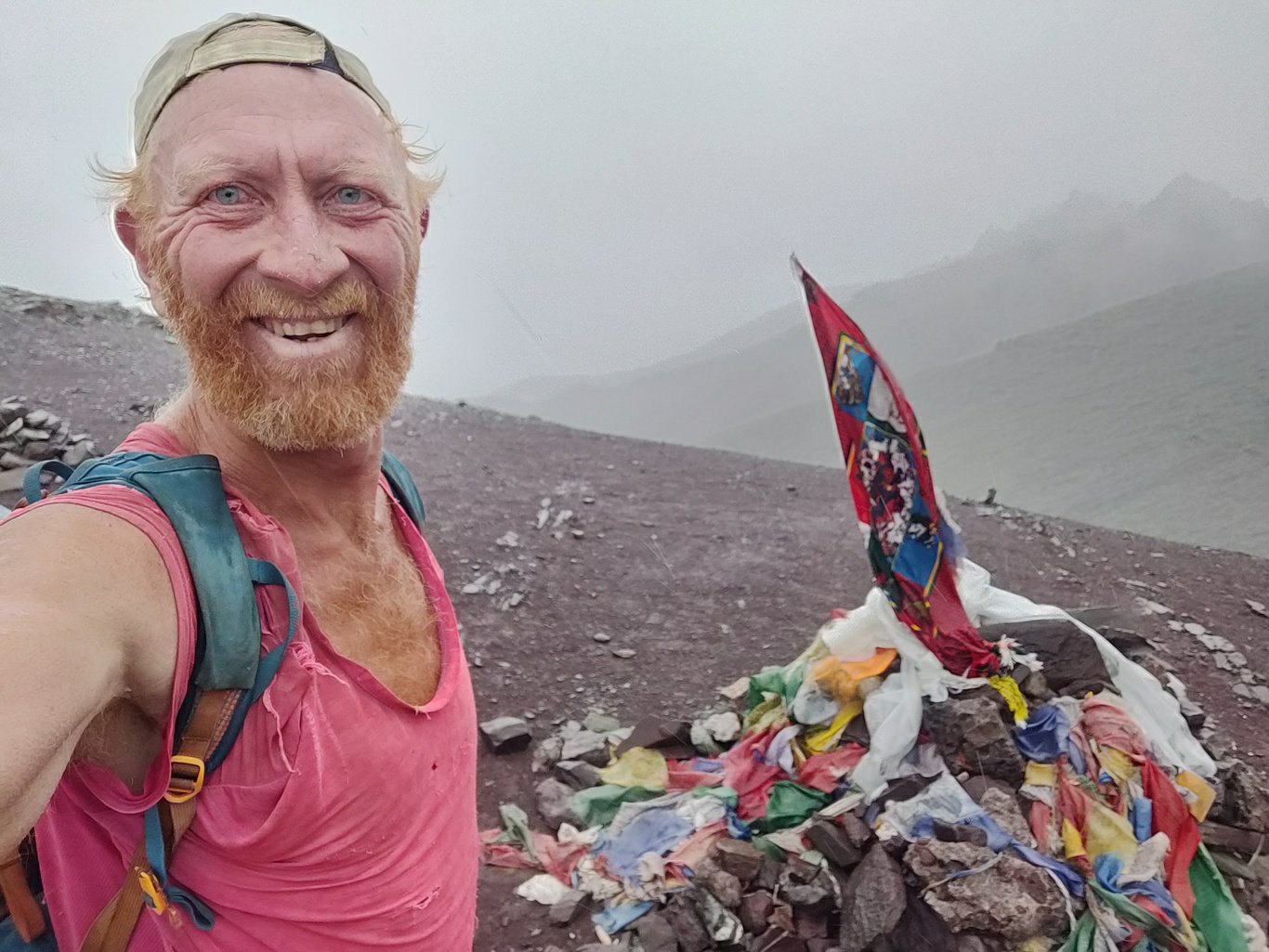While walking from Karu to Shang on 26th evening I was lucky to hitch a ride in the car of this Ladakhi family. He was an army officer stationed in the Saichen glacier in Nubra and was on his way home for vacation. On learning my plan to cross over the Chang La, they kindly invited me to stay over in their home in Chang village. It was a beautiful traditional home in a beautiful green village inside the barren landscape of Ladakh. She prepared fresh broccoli from the garden with rice and eggs. We all sat together in the living room which had a beautiful display of traditional Ladakhi kitchen utensils. Big windows offered a nice view on the veggie garden and farm fields outside.
It was a beautiful traditional home in a beautiful green village inside the barren landscape of Ladakh. She prepared fresh broccoli from the garden with rice and eggs. We all sat together in the living room which had a beautiful display of traditional Ladakhi kitchen utensils. Big windows offered a nice view on the veggie garden and farm fields outside. I slept in a beautiful room filled with carpets and large windows with views on the lush greenery outside. Shang village had electricity so I could charge my phone and powerbank for the journey ahead. I had a wonderful sleep with the buzzing sound of the stream outside and woke up at 6:30am.After tea and rusk I bid goodbye to my host. He dropped me with the car a few kilometres further at the road head and last homes of the village. From here a clear trail proceeds along the stream towards the pass.
I slept in a beautiful room filled with carpets and large windows with views on the lush greenery outside. Shang village had electricity so I could charge my phone and powerbank for the journey ahead. I had a wonderful sleep with the buzzing sound of the stream outside and woke up at 6:30am.After tea and rusk I bid goodbye to my host. He dropped me with the car a few kilometres further at the road head and last homes of the village. From here a clear trail proceeds along the stream towards the pass. A long line of Tibettan prayer rolls marks the boundary of the village. I took a final selfie with my kind host and promised to connect through Facebook later on. He insisted I visited his home again next year which I agreed to.
A long line of Tibettan prayer rolls marks the boundary of the village. I took a final selfie with my kind host and promised to connect through Facebook later on. He insisted I visited his home again next year which I agreed to. The Shang La at 4930m is a 7km hike and 1000m gradual ascent from the village. Along the way there is a small shop cum dhaba run by an elder gentleman. I stopped over for breakfast: 2 Maggie’s, 2 eggs and tea. I met a French couple with 7 horses heading the opposite way.
The Shang La at 4930m is a 7km hike and 1000m gradual ascent from the village. Along the way there is a small shop cum dhaba run by an elder gentleman. I stopped over for breakfast: 2 Maggie’s, 2 eggs and tea. I met a French couple with 7 horses heading the opposite way. From here it s a 1.5 hour climb towards the pass which is clearly marked with colourful Buddhist prayer flags. After the pass the trail drops down 500m and them hops across an in between ridge. Then it contours on the left side of the valley towards the next pass: the Matho La.
From here it s a 1.5 hour climb towards the pass which is clearly marked with colourful Buddhist prayer flags. After the pass the trail drops down 500m and them hops across an in between ridge. Then it contours on the left side of the valley towards the next pass: the Matho La. On the way I met up with a friendly couple from the UK. He was a mountain guide and was staying in Ladakh for several years. He had also lived 3 years in Mongolia with mountain tribes. He was very interested in my knowledge of passes in the Indian Himalayas. We exchanged contacts and promised to sync up later on.
On the way I met up with a friendly couple from the UK. He was a mountain guide and was staying in Ladakh for several years. He had also lived 3 years in Mongolia with mountain tribes. He was very interested in my knowledge of passes in the Indian Himalayas. We exchanged contacts and promised to sync up later on. In the valley between the Shang La and Matho La there were several European hiking groups pitched up proceeding in both directions. They usually camp at the base of the pass and cross the next morning. In the last two weeks in Ladakh I had encountered most European nationalities hiking around the region.
In the valley between the Shang La and Matho La there were several European hiking groups pitched up proceeding in both directions. They usually camp at the base of the pass and cross the next morning. In the last two weeks in Ladakh I had encountered most European nationalities hiking around the region. I reached Matho La in the early afternoon while the weather became overcast and it started raining. I quickly descended into the Stok valley where the trail was soggy and slippery. Down the valley I joined the main Stok Kangri trail. I took shelter from the rain in a bigger tent which extends permits to trekkers. Proceedings go to the Stok panchyat and gompa.
I reached Matho La in the early afternoon while the weather became overcast and it started raining. I quickly descended into the Stok valley where the trail was soggy and slippery. Down the valley I joined the main Stok Kangri trail. I took shelter from the rain in a bigger tent which extends permits to trekkers. Proceedings go to the Stok panchyat and gompa. The person in charge kindly offered me tea and snacks. We chatted up for quite some time and while my next plan was the Stok La pass I slowly got interested to give the Stok Kangri summit a try. At 5pm after paying an 800Rs permit fee I set of to the base camp 4km away.
The person in charge kindly offered me tea and snacks. We chatted up for quite some time and while my next plan was the Stok La pass I slowly got interested to give the Stok Kangri summit a try. At 5pm after paying an 800Rs permit fee I set of to the base camp 4km away. At the base camp I met up with the same group I had met in a homestay in Hanumil, Zanskar 2 weeks before. A Swiss girl accompanied by a rescue guide from Zanskar and his daughter. They kindly invited me inside their kitchen tent for tea and food which I kindly accepted as I was low on my own ration.
At the base camp I met up with the same group I had met in a homestay in Hanumil, Zanskar 2 weeks before. A Swiss girl accompanied by a rescue guide from Zanskar and his daughter. They kindly invited me inside their kitchen tent for tea and food which I kindly accepted as I was low on my own ration. They were planning to start their summit attempt at midnight a 1200m climb from the base camp. I decided to join along with them. Summiters start very early while the snow is frozen and it’s easier to climb up. I settled down in my bivy while it was still raining to catch a few hours of rest and hoping the weather would clear by midnight.
They were planning to start their summit attempt at midnight a 1200m climb from the base camp. I decided to join along with them. Summiters start very early while the snow is frozen and it’s easier to climb up. I settled down in my bivy while it was still raining to catch a few hours of rest and hoping the weather would clear by midnight.
Copyright © 2019 UltraJourneys - Supported by dreams
